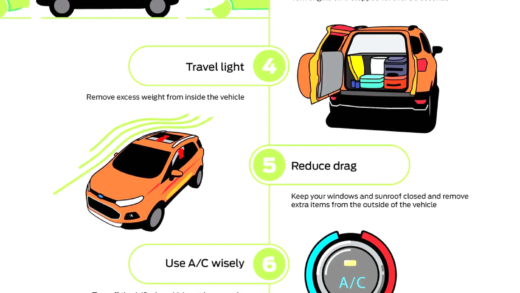Pangaea was a supercontinent that existed millions of years ago, formed by the joining of nearly all landmasses. Alfred Wegener proposed the continental drift hypothesis, suggesting Pangaea’s breakup was driven by tectonic forces. Geological evidence, such as similar fossils and mountain ranges, supports this theory. The separation impacted climate and biodiversity, leading to diverse ecosystems. Understanding Pangaea is crucial for grasping plate tectonics and predicting geological activity, with remnants observable in modern continents.
What is Pangaea?
Pangaea was a supercontinent that existed approximately 335 to 175 million years ago. It united almost all the Earth’s landmasses into a single, vast expanse. The name “Pangaea” comes from the Greek words meaning “all lands.” During its existence, Pangaea provided a unique landscape where diverse ecosystems thrived. It was surrounded by a massive ocean called Panthalassa. Over millions of years, Pangaea began to break apart, leading to the formation of the continents we recognize today.
Who was Alfred Wegener?
Alfred Wegener was a German meteorologist and geophysicist known for his groundbreaking work in the early 20th century on the theory of continental drift. Born in 1880, Wegener proposed that continents were not static but moved across the Earth’s surface. His observations and research laid the foundation for the Pangaea hypothesis, suggesting that all continents were once part of this giant landmass. Wegener’s ideas were initially met with skepticism, but they eventually gained traction and significantly influenced modern geology and plate tectonics.
Wegener’s Hypothesis
Wegener’s hypothesis revolved around the idea that continents drift apart over geological time. He suggested that Pangaea was a single landmass that split into smaller continents. His theory was based on various pieces of evidence, including similar fossil finds across continents, matching geological formations, and climatic data indicating past connections. Wegener’s insights sparked scientific interest in the mechanisms behind continental drift, paving the way for future research that confirmed his theories through the study of plate tectonics.
Gathering Evidence for Pangaea
Pangaea’s existence is supported by various lines of evidence that scientists have meticulously gathered over the years. Key pieces of evidence include:
- Fossil Correlation: Identical fossils, such as the Mesosaurus, were found on continents that are now widely separated by oceans. This indicates that these landmasses were once connected.
- Geological Similarities: Mountain ranges and rock formations on different continents show remarkable similarities. For instance, the Appalachian Mountains in North America align with the Caledonian Mountains in Scotland.
- Climate Evidence: Past climate indicators, such as coal deposits in cold regions and glacial deposits in warmer areas, suggest that continents were once located in different climatic zones.
Scientists also studied the distribution of certain minerals and the patterns of ancient sea floors to reinforce the Pangaea hypothesis. These findings have played a significant role in understanding the geological history of Earth.
Forces Behind the Breakup
Pangaea did not remain intact forever; it was subjected to various geological forces that caused its breakup. The primary forces include:
- Plate Tectonics: The movement of tectonic plates is the driving force behind continental drift. These plates float on the semi-fluid asthenosphere beneath them, causing them to shift over time.
- Seafloor Spreading: New oceanic crust is formed at mid-ocean ridges, pushing continents apart. This process significantly contributed to the separation of Pangaea.
- Subduction Zones: Areas where one tectonic plate is forced under another create geological activity, leading to the reshaping of continents.
These forces worked together over millions of years, leading to the gradual disintegration of Pangaea into the continents we know today.
Continental Separation
The mechanics of continental drift explain how the once unified landmass of Pangaea gradually separated. This process involved:
- Movement Rates: Continents drift at a slow rate, typically a few centimeters per year. This movement is imperceptible in our lifetime but has profound effects over millions of years.
- Geological Changes: As the continents moved, they underwent significant geological transformations, including the formation of new mountain ranges and ocean basins.
- Ocean Formation: The breakup of Pangaea led to the creation of the Atlantic Ocean, marking a significant change in Earth’s geography.
Understanding the mechanics of continental separation helps clarify how Earth’s surface has evolved over geological time. These movements continue to shape our planet, reminding us of the dynamic nature of our world.
Geological Features of Pangaea’s Breakup
Pangaea’s breakup left behind significant geological features that provide insight into the processes involved. The remnants of this ancient supercontinent are evident in various geological formations around the world. Key features include:
- Mountain Ranges: The collision of tectonic plates during Pangaea’s separation led to the formation of prominent mountain ranges, such as the Himalayas and the Andes. These mountains serve as a testament to the intense geological activity that reshaped the Earth’s surface.
- Ocean Basins: The Atlantic Ocean, which formed as Pangaea split, showcases the result of seafloor spreading. The Mid-Atlantic Ridge is a prime example where new oceanic crust is created, pushing continents further apart.
- Fossil Beds: Locations like the Karoo in South Africa and the Paraná Basin in Brazil reveal fossil beds that provide evidence of similar ecosystems that existed when continents were joined. These geological features support the idea of a connected landmass.
Overall, the geological features resulting from Pangaea’s breakup offer a rich tapestry of evidence for understanding continental drift and the dynamic nature of Earth’s crust.
Climate Changes Following the Breakup
Pangaea’s breakup significantly influenced global climate patterns. As the continents drifted apart, they underwent climatic changes that affected ecosystems. Notable impacts include:
- Shifts in Weather Patterns: The separation of landmasses created new ocean currents and atmospheric conditions, leading to diverse climates. For example, areas that were once tropical became arid.
- Impact on Biodiversity: The fragmentation of habitats led to isolated ecosystems, promoting speciation. This resulted in unique flora and fauna adapted to specific environments.
- Glaciation Events: Some regions experienced glaciation due to changing climate patterns, particularly during the late Paleozoic era, affecting the distribution of species and ecosystems.
These climate changes illustrate the complex relationship between continental drift and ecological systems, highlighting the profound effects of Pangaea’s breakup.
The Significance of Pangaea in Plate Tectonics
Pangaea plays a crucial role in the study of plate tectonics, providing essential insights into Earth’s geological history. Its significance lies in several areas:
- Foundation for Plate Tectonics: Pangaea’s existence and subsequent breakup helped establish the framework for the theory of plate tectonics, explaining how continents move and interact.
- Understanding Earth’s History: By studying Pangaea, geologists can better understand the Earth’s geological past, including the formation of mountains, ocean basins, and the evolution of life.
- Predicting Geological Activity: Knowledge of Pangaea aids in predicting current geological activity and assessing potential natural disasters, such as earthquakes and volcanic eruptions.
Pangaea remains a cornerstone in geology, illuminating the processes that shape our planet.
Current Geological Activity Related to Pangaea
The legacy of Pangaea continues to influence present-day geological activity. Understanding its breakup allows scientists to make connections with modern tectonic processes. Key aspects include:
- Plate Movements: The movement of tectonic plates today is a direct result of forces that were active during Pangaea’s time. These movements lead to earthquakes, volcanic activity, and mountain-building.
- Ongoing Research: Scientists are studying the remnants of Pangaea to understand how geological processes affect current landscapes and ecosystems, including the formation of rift valleys and ocean trenches.
- Climate Change Insights: The historical data from Pangaea provides context for understanding contemporary climate change, helping predict future environmental shifts.
Thus, Pangaea’s history not only informs our understanding of the past but also shapes our approach to addressing current geological challenges.
Remnants of Pangaea in Today’s Continents
Despite the vast changes since Pangaea’s breakup, traces of this supercontinent still exist in today’s continents. These remnants include:
- Geological Similarities: Similar rock formations and fossil records can be found across continents, indicating their shared history. For instance, the alignment of the Appalachian and Caledonian mountains reflects their ancient connection.
- Fossil Distribution: Identical fossils of plants and animals found on widely separated continents serve as evidence of Pangaea’s existence, such as the Glossopteris plant.
- Continental Shapes: The jigsaw-puzzle fit of continental coastlines, particularly the east coast of South America and the west coast of Africa, visually reinforces the idea of a once unified landmass.
These remnants are not just historical artifacts; they provide valuable insights into Earth’s geological processes and the evolution of life.





Comments are closed.